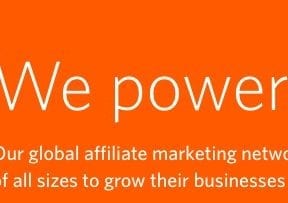
Affiliate marketing is a huge industry, with many programs and models. One model is to rely on promoters with a specialized expertise and an audience that trusts their recommendations and advice. Learn Camtasia, a training platform, is an example of a specialized, niche promoter.
If you attend the Affiliate Summit West conference in Las Vegas next January, you will be among 6,000 attendees from more than 70 countries. At some point, you may ask yourself, “Who are these people?”
The answer is that they are all digital marketers, networking and finding new ways to grow in 2018. They will talk about aspects of affiliate marketing you may have never heard of.
At the end of the day, you’ll understand how big this industry is and how many models of affiliate marketing exist. It’s conferences like this that expose you to different opinions and strategies that help you refine your business.
In this post, I’ll describe the two primary methods of compensating affiliates — cost per sale and cost per action — and the communities that exist around each. I’ll also address three important affiliate segments: niche promoters, mega influencers, and Amazon Associates.
Cost Per Sale
My primary focus for the last 12 years has been on the cost-per-sale side of the industry. That’s what I usually write about here on Practical Ecommerce. The affiliates I work with are bloggers, influencers, reviewers, data feed users, couponers, and general sites that rank well in search engines with evergreen content.
Cost-per-sale merchants are small and large online retailers with multiple channels at their disposal. Sometimes they have brick-and-mortar stores or catalogs that have been around for decades. They pay affiliates a commission based on the final sale of the product.
It’s up to the affiliates to determine how they will monetize. Many of them will cross over to different models and eventually settle on the most effective method for their audience, means, and talents. Some want to make money immediately and others that would be happy with passive income each month.
Cost Per Action
The cost-per-action side of the industry — CPA — is fast moving and highly competitive. These are the hustlers, the risk-takers that will spend money to make money.
Industry veteran Ian Fernando talks about days when he would spend $8,000 on paid search ads to make $9,500. He had to stay on top of the trends and analytics because an increase in the cost per click could mean a huge loss, in a matter of hours. The goal, at the end of the day, was to have more good hours than bad.
Fernando has now moved to white label products. He buys physical products and finds affiliates with the right audience to promote subscriptions or trials for them. He switched from the affiliate to the merchant side but stayed in the CPA niche. He lives abroad and runs global campaigns, like many of his CPA colleagues.
There are thousands of entrepreneurs like Fernando and hundreds of networks and agencies that specialize in CPA affiliate marketing. These offers are typically flat fee payouts for sales, leads, registrations, or installs.
Kris Trujillo, owner of CRM BlackBox, a marketing agency, says a current hot market is sales and trials of cannabis products. These are not the typical products offered by cost-per-sale merchants, but they do mean fast money for affiliates with the right traffic.
Trujillo said the cannabis affiliates are targeting older demographics in search of pain management. As long as states continue to move forward with legalization of marijuana, this hot market will likely continue.
Other markets doing well include dating, travel, and mobile gaming. Ten years ago, it was mortgage leads and ringtone downloads. Cost-per-action affiliates have to adapt to changing markets or they won’t have income.
Cost-per-action affiliates have to adapt to changing markets or they won’t have income.
Niche Promoters
Another subset of affiliate marketers specializes in promoting products for specific business niches. The best affiliates for these categories have built-in communities based on their expertise in certain fields.
The CJ Affiliate by Conversant network has 120 niches in the business category, including web hosting, business loans, and domain registrations. ShareASale, a similar affiliate-marketing network, has 129 programs listed in the category. The right affiliate can deliver strong recommendations to these products and services. Affiliates can significantly influence consumer decisions.
Lon Naylor, of Learn Camtasia, is an example of a successful niche affiliate. Learn Camtasia offers training and tools for that software. Naylor is a video marketing coach. He said he earns 43 percent of his income through affiliate marketing. His community recognizes him as an expert and responds when he introduces them to new products. In some cases, when he refers customers to monthly subscription services, he enjoys ongoing payouts each month for the life of that customer.
Affiliates like Naylor also use networks — such as JVZoo and ClickBank — that offer easy access to authors and business owners with ebooks, video guides, and training materials in thousands of different product categories. Consumers can learn how to select a digital camera or how to play the piano, as examples.
Mega Influencers
“Mega influencers” typically have specialized expertise and have relationships with thought leaders, such as conference speakers and best-selling authors. Mega influencers can have hundreds of thousands of followers, who sign up for more information through email newsletters.
These emails will sometimes address offers from thought-leader friends, who collectively exchange email lists on occasion and pay each other commissions based on sales. Landing a deal with one of these mega-influencer affiliates could be a game-changer, but there is never a guarantee.
Amazon Associates
The majority of all affiliates focus on the Amazon Associates program, launched in July 1996. Commissions are limited compared to other cost-per-sale programs, but since there are more than 60 million Prime members and they have access to millions of products, conversion is usually stronger.
Shoppers might only want paper towels but end up spending much more while surfing Amazon. This benefits affiliates but they still have to analyze what works best for them: higher commission percentages with a bit of work or lower percentages with minimal effort.
There are still other models of affiliate marketing. Be aware of the different opportunities and creative promotions when you consider the options. Attend conferences and learn more about what affiliates can do for your brand and what kinds of affiliates are the best fit.




